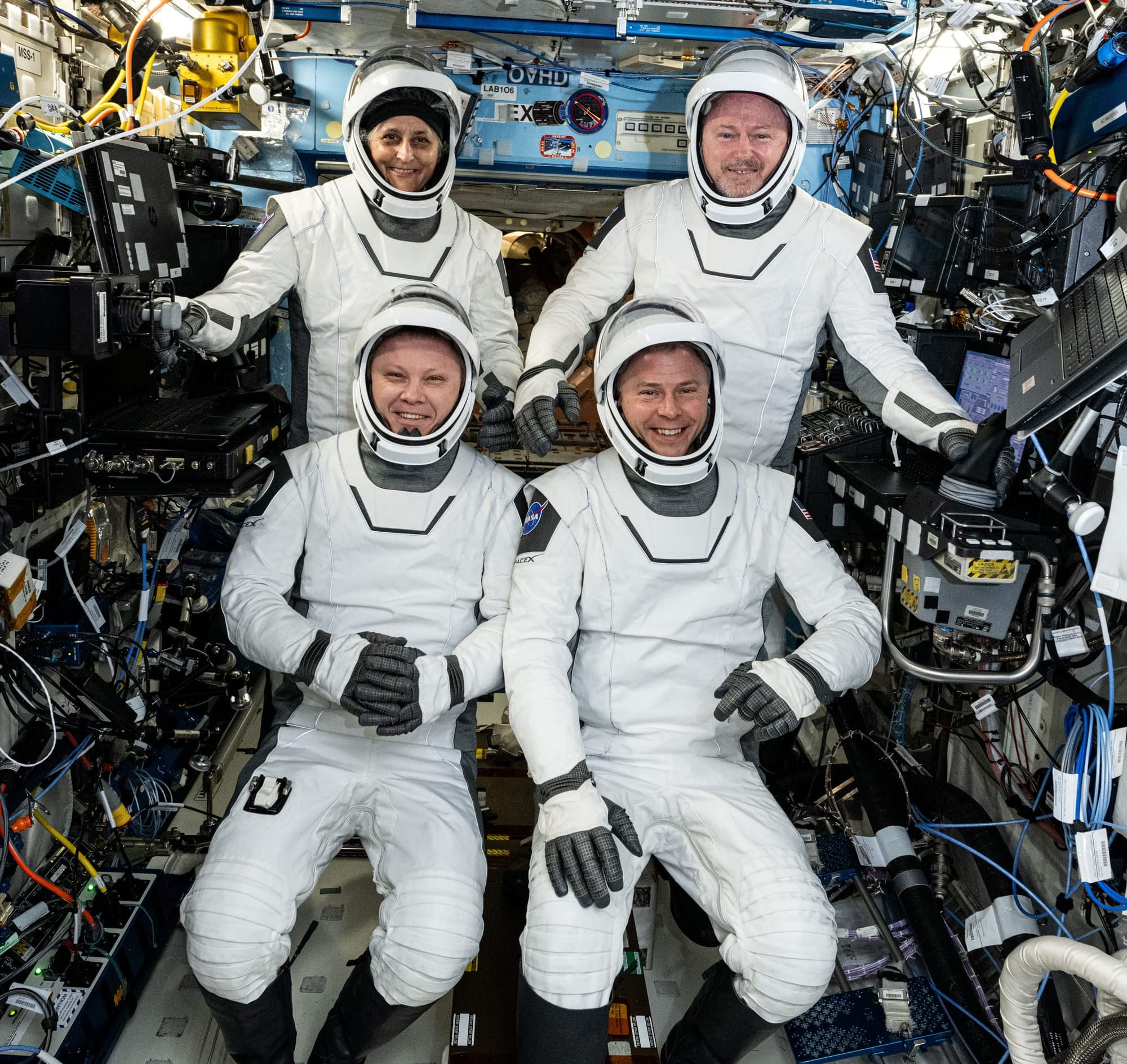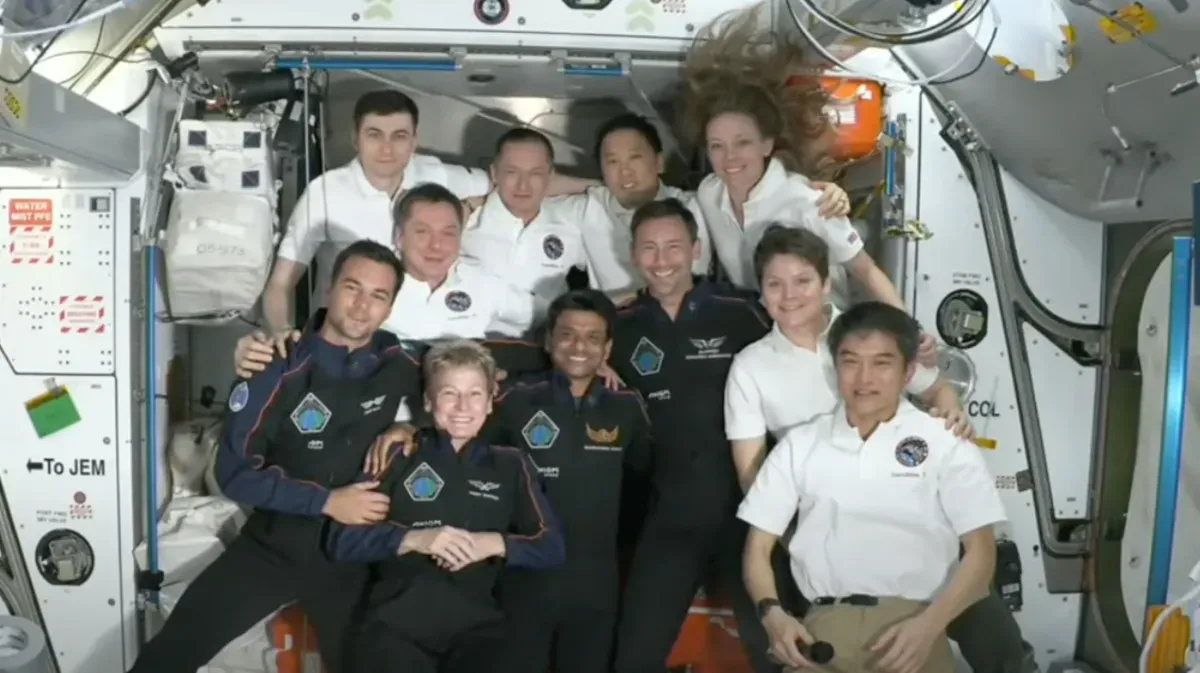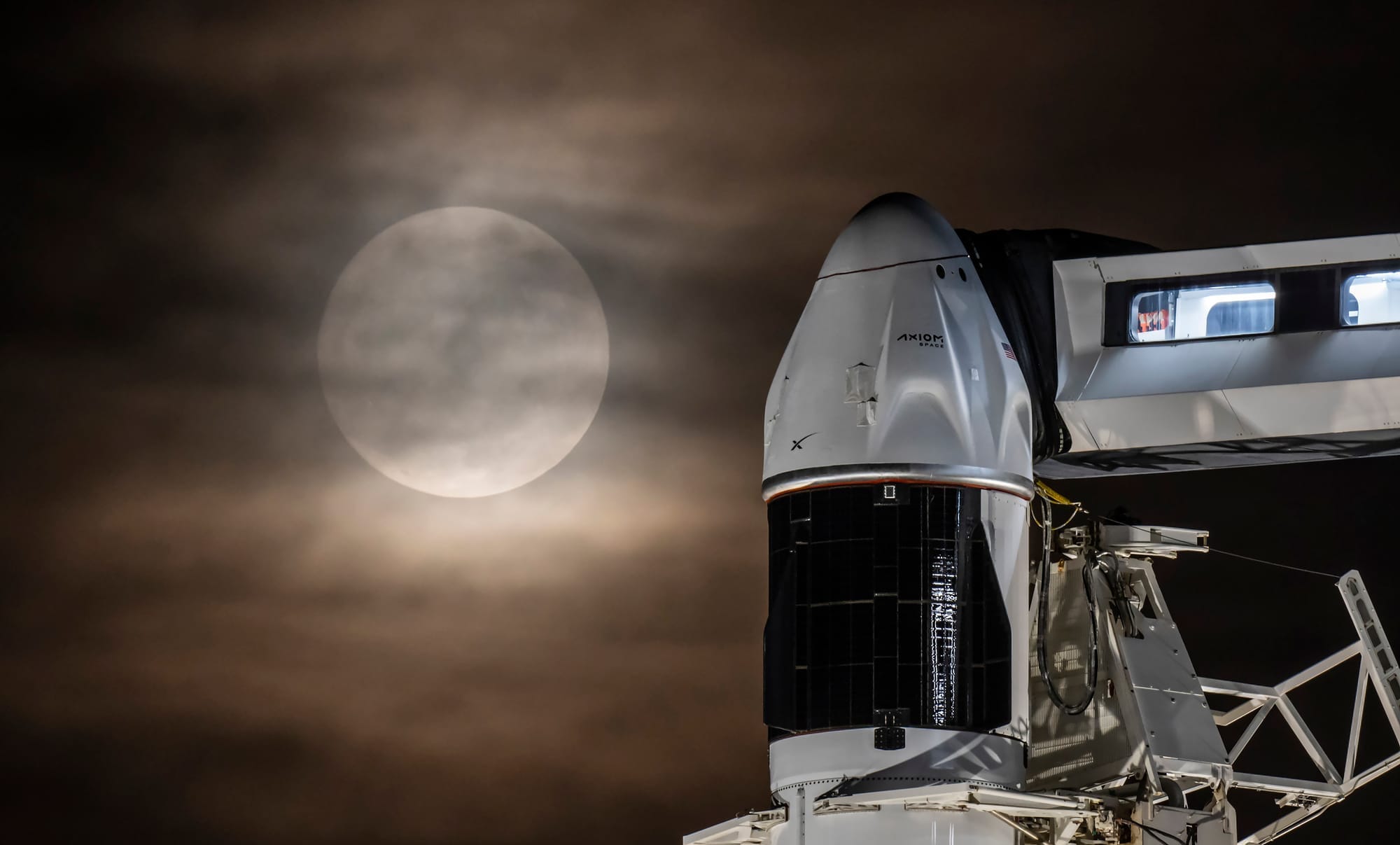Table of Contents
Late last night, March 18th, a SpaceX Crew Dragon splashed down off the coast of Florida, ending the Crew-9 mission. Crew-9 launched almost six months ago bringing just two astronauts to the International Space Station.
The unplanned welcome crew!
— NASA's Johnson Space Center (@NASA_Johnson) March 18, 2025
Crew-9 had some surprise visitors after splashing down this afternoon.🐬 pic.twitter.com/yuOxtTsSLV
Some dolphins greeting the Crew-9 astronauts after splashdown, via NASA's Johnson Space Center on Twitter.
The two astronauts launched back in September, NASA's Nick Hague and Roscosmos' Aleksandr Gorbunov, with two additional crew members bumped from the mission to allow Starliner's astronauts to have a safe ride back to Earth. Those astronauts are NASA's Suni Williams and Butch Wilmore.
In August 2024, NASA made the decision that Starliner was unfit to return Suni and Butch to Earth, eight weeks into their eight-day mission to verify the spacecraft for routine crewed missions to the station. With the decision made by NASA, Starliner returned to Earth uncrewed in September, touching down at White Sands Space Harbor, in New Mexico.
For time in space since launch, Suni and Butch spent 286 days in space while Nick and Aleksandr were in space for 171 days. Following the splashdown, Steve Stich, NASA’s Commercial Crew Program Manager, said the following regarding crew health:
"The crew's doing great, they'll spend a little time on the recovery ship getting checked out, making sure they're healthy and ready to go. And then eventually they'll make their way back to Houston."
As is standard for crew rotations aboard the International Space Station, the Crew-9 mission remained on station for the arrival of Crew-10 a few days ago, following a launch last week. After a few days of working together, Crew-9 departed the station earlier in the week for its return to Earth, bringing Butch and Suni home after eight months.
Next up for Starliner
At present, Boeing anticipates six more Starliner launches aboard United Launch Alliance's Atlas V. Boeing cannot book any more Atlas V's due to United Launch Alliance having shifted its focus towards its new launch vehicle, Vulcan. As a result, Starliner can only complete a limited number of possible crewed missions before being tested to fly on top of another rocket.
However, NASA currently doesn't appear ready to fly more than three Starliner missions before the retirement of the International Space Station. This could have Starliner flying once a year, alongside SpaceX's Crew Dragon, between 2026 and 2029, as the space station is set to deorbit around 2030. The agency would still like to have Starliner as an additional spacecraft in the event of problems with Crew Dragon.
Additionally, since the uncrewed return of Starliner, Boeing has remained near radio silent regarding the vehicle and its future.
A political fiasco
While Butch and Suni were aboard the International Space Station, U.S. President Donald Trump and his bankroller Elon Musk, Head of SpaceX, espoused false claims that the previous Biden Presidential Administration had abandoned the duo. Recently, NASA's Acting Administrator Janet Petro repeated this to a degree stating:
“Per President Trump’s direction, NASA and SpaceX worked diligently to pull the schedule a month earlier. This international crew and our teams on the ground embraced the Trump Administration’s challenge of an updated, and somewhat unique, mission plan, to bring our crew home."
Butch and Suni were never stranded aboard the station and always had a spacecraft to return them in the event of an emergency. First Starliner, then Crew-8's Crew Dragon, and finally Crew-9's Crew Dragon. NASA chose to keep the two astronauts onboard, and fly two less for Crew-9, in order to maximize the station's schedule and science with little risk or cost, flying an extra rescue spacecraft up would have cost hundreds of millions of Dollars at minimum to the agency. Last month in February Butch told CNN the following:
“We don’t feel abandoned” – “We don’t feel stranded. I understand why others may think that. We come prepared. We come committed.”
Despite this, Elon Musk kept repeating the lie of abandoned astronauts, even while being called out by other astronauts, and claiming he offered to return the astronauts, which he did not. This eventually led to him calling for an early end to the International Space Station in 2027, conveniently when SpaceX is no longer contracted to fly Crew Dragon as the U.S.' sole operational crew vehicle to the station.
With their safe return yesterday, the Trump White House has claimed that the duo's return was a Trump victory. This is false as their return with Crew-9 was decided by NASA under the Biden Administration, with Trump's sole contribution being a request to move the mission a few days due to delays with a new SpaceX Crew Dragon vehicle.
Who's returning?

Suni Williams flew aboard Starliner for its flight test to the space station for her third trip to space. She first flew to the International Space Station on STS-116, with a return on STS-117 after a 192-day stay onboard. Her second trip to space was on Soyuz TMA-05M, which also headed to the International Space Station, where she was onboard for 124 days.
Butch Wilmore also flew to the station aboard Starliner for the flight test and is for his third trip to space. He first flew to space aboard STS-129 which delivered cargo to the International Space Station as part of an almost 11 mission. His second trip to space was on Soyuz TMA-14M for a 166-day stay aboard the International Space Station.
Nick Hague is the Commander of the Crew-9 mission for his third trip above the Kármán line, and second to the International Space Station. Hague's first trip into space was during the launch of Soyuz MS-10 which experienced booster failure leading to a high-altitude abort. His first trip to the International Space Station was during the Soyuz MS-12 mission, where he spent 203 days in space.
Aleksandr Gorbunov is a Mission Specialist for the Crew-9 mission for his first trip to space. Gorbunov was selected as a cosmonaut in 2018 having studied engineering at the Moscow Aviation Institute as well as working at Rocket Space Corp. Energia supporting cargo spacecraft launches from the Baikonur Cosmodrome.
What is Crew Dragon?
Dragon separation confirmed! pic.twitter.com/xjToQWAsLm
— SpaceX (@SpaceX) March 18, 2025
Crew Dragon departing the International Space Station for the Crew-9 mission, via SpaceX on Twitter.
Crew Dragon, or Dragon 2, is a partially reusable spacecraft developed by SpaceX. The primary use for Crew Dragon is to send crew to and from the International Space Station. SpaceX also performs free-flight missions with the spacecraft.
Crew Dragon consists of the capsule and trunk. The trunk is used to store unpressurized cargo as well as have solar panels mounted on one side, to generate power, and radiators on the other, to dissipate heat generated inside. The trunk is not reused and burns up in the atmosphere after each mission. The capsule is where the crew will be during launch, landing, and while on their way to space.
Unlike the original Dragon capsule, the Crew Dragon capsule has a launch abort system consisting of eight SuperDraco engines. This abort system can also be used to bring the capsule to a soft touchdown in the event of four parachute failures. The capsule also has a nosecone that will fold out of the way in space to protect the docking hardware and forward-facing thrusters during launch and landing. The forward-facing thrusters are the main propulsion system for performing maneuvers while in flight. Up to four parachutes will deploy from the capsule during descent to allow it to splash down for recovery.
Crew Dragon was developed as part of NASA's Commercial Crew Program to regain crew access to the International Space Station from the United States of America after the retirement of the Space Shuttle. SpaceX currently has four active Crew Dragon capsules; Endeavour, Resilience, Endurance, and Freedom. A fifth Crew Dragon capsule is under construction and is expected to be finished in 2025.






